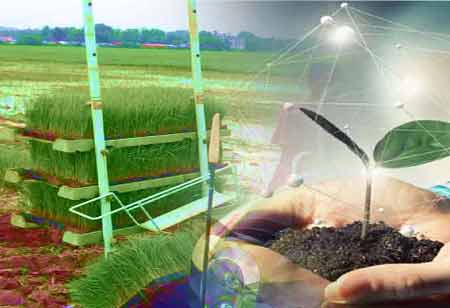Thank you for Subscribing to Agri Business Review Weekly Brief
Importance Of Plants In The Present World
The sun is the provider of all energy.

By
Agri Business Review | Friday, October 28, 2022
Stay ahead of the industry with exclusive feature stories on the top companies, expert insights and the latest news delivered straight to your inbox. Subscribe today.
Knowing should cause us to care more about the beautiful botany surrounding us.
FREMONT, CA: Daily, we encounter plants in parks, the wild backwoods of nature, or the simple pleasure of landscaping the interior and exterior of our homes. But do we truly realize the vital role plants have in this world? Knowing should cause us to care more about the beautiful botany surrounding us.
WHY PLANTS ARE VALUABLE & IMPORTANT
FOOD
The sun is the provider of all energy. We eat plants to amass the energy stored in their cells. And we are here because our ancestors rummaged plants for food. They learned the methods of agriculture to make it simple and grew plants that generated products such as wheat and corn to eat. About 7,000 different plant species have been cultivated and utilized as food for people. Though humans can live on the intake of animal products, it is just a step away from plants from cows, pigs, sheep, chickens, rabbits and other animals eat plants to live.
AIR
The air we breathe mainly consists of 78% nitrogen and 21% oxygen. But oxygen is vital for our cells to produce energy that originated with the sun. When the sun shines, plants absorb the sunlight to produce energy and release oxygen into the air as a by-product of their metabolism. We successively inhale the oxygen for our endurance and exhale the carbon dioxides plants need. Breathe deeply, drink in the oxygen-laden air, and realize this is because of plants. We are alive.
WATER
Water is the source of life. Plants control the water cycle by distributing and purifying the planet's water supply. Through transpiration, plants transfer the water from the soil up their roots and out into the atmosphere. First, moisture amasses into clouds; eventually, the water droplets are returned down as rain to revitalize life on earth.
MEDICINE
Many prescription medicines come from plant extracts or synthesized plant compounds. For example, aspirin originates from the bark of the willow. Mint leaves have mentha in throat lozenges, muscle creams, and nasal medicine. The malaria drug component quinine is from the yelp of the Cinchona tree. As per the World Health Organization, about 65% – 80% of the world's population utilize holistic plant-based medicine as their primary form of healthcare.
WELLNESS
The execution of LEED and WELL Building Standard display that society is learning the value of integrating nature or biophilia into man-made environments, both in and out, for psychological and physical health. Plants boost health, happiness, attentiveness, and productivity when weaved inside buildings and across the communities. Comprising living plants inside a home or business revitalizes the air and humidity and lowers stress levels for finer wellness.
HABITAT and CLOTHING
Plants comprise the backbone of the earth's diverse landscape, providing hundreds of unique habitats necessary for life. Flowers frisk in the fields while grasses on a hill shake in the wind. Trees flourish tall in their habitat and act as the earth's dynamic lungs, energizing life everywhere. Birds collect straw, leaves, bark, feathers, hairs, and other items to make a comfortable nest in trees, bushes, or tall grasses. Our ancestor's utilized thatched roofs made of grasses, palm fronds, and wood to secure their homes. Industrial hemp was the first plant spun into usable fiber 10,000 years ago. Plants, in all their variety, keep the cycle of life moving.
CLIMATE
Excessive carbon discharged into the environment has been blamed for the present climate change we are experiencing. Is it explained that plants store carbon by drawing from the air? Plants aid keep much of the carbon dioxide from burning fossil fuels out of the atmosphere. We owe our temperate climate to the persistent landscape of green that blankets our world.





